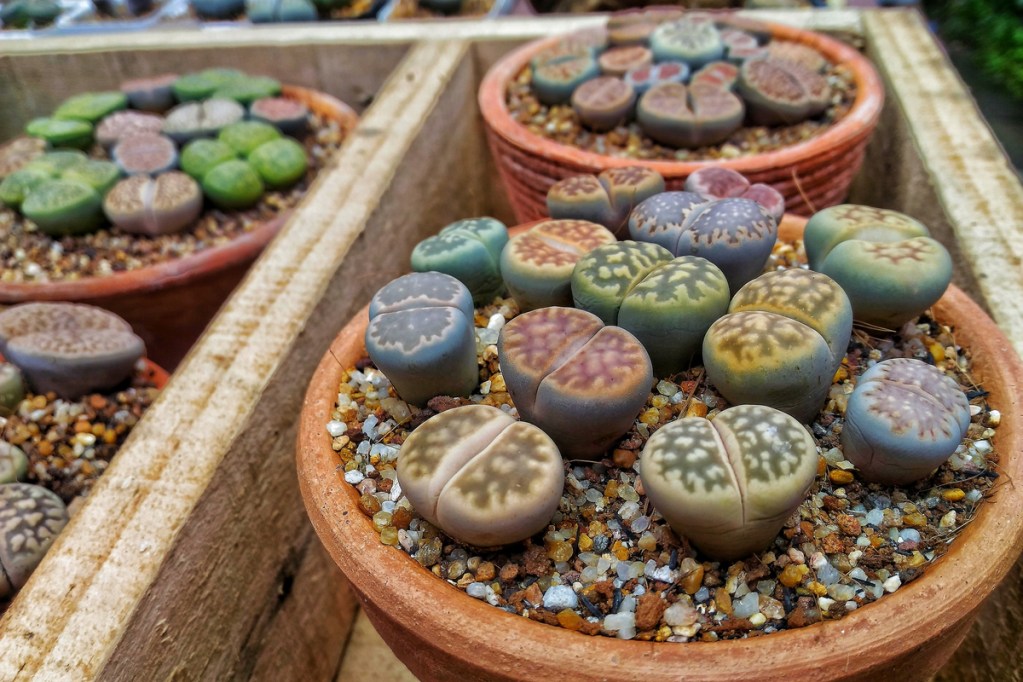Lithops are known as living stone plants (and are occasionally called “split rocks” or “pebble plants”) due to their quaint, rock-like appearance. They are small, drought-resistant plants that often don’t grow more than an inch above the surface of the soil. Lithops have two thick, padded leaves that resemble both a cleft in a hoof — sometimes earning them the endearing name of “butt plants” — or green to gray stones, depending on the color of the plant. Unlike that pet rock you may have had as a kid, though, keeping your lithops alive can be quite a complex task. You may know how to water a succulent, but lithops are rather tricky, and their watering schedule will need you to be diligent and observant. But no worries! These oddball cuties are totally worth the fuss, so we’ll show you exactly how to meet your lithops care needs.

What are the basic care requirements?
The most important thing for lithops is to make sure you have the right kind of potting material. Remember where lithops come from — aka, the desert — and the type of environment they’re best suited for — aka, well, desert conditions. Potting material that is rich in organic material is great for some plants, but lithops will die if planted in it. Pick something that is sandy, rocky, and drains quickly, like a succulent and cactus potting mix.
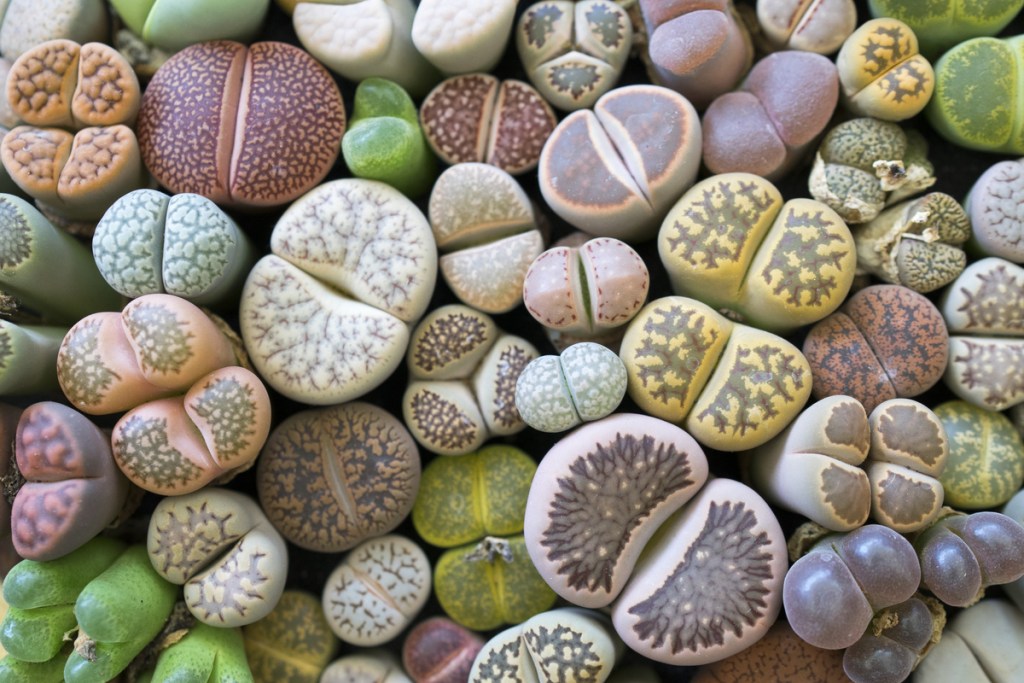
Make sure your lithops are getting plenty of sun, but don’t let them burn. Lithops are well adapted to bright sunlight, so placing them in a sunny window that gets a lot of direct light is a good move. If you live somewhere hot, they can even be outdoor plants! However, plants can get sunburnt if they’re transitioned into direct light too suddenly.
If you’re getting your lithops from a store that kept them out of direct light, or if you aren’t certain about their growing conditions, it’s a good idea to transition them slowly. Start them in indirect or diffused light, perhaps with a sheer curtain or shade cloth between them and the light. Then, slowly move them into more light to give them a chance to adapt.
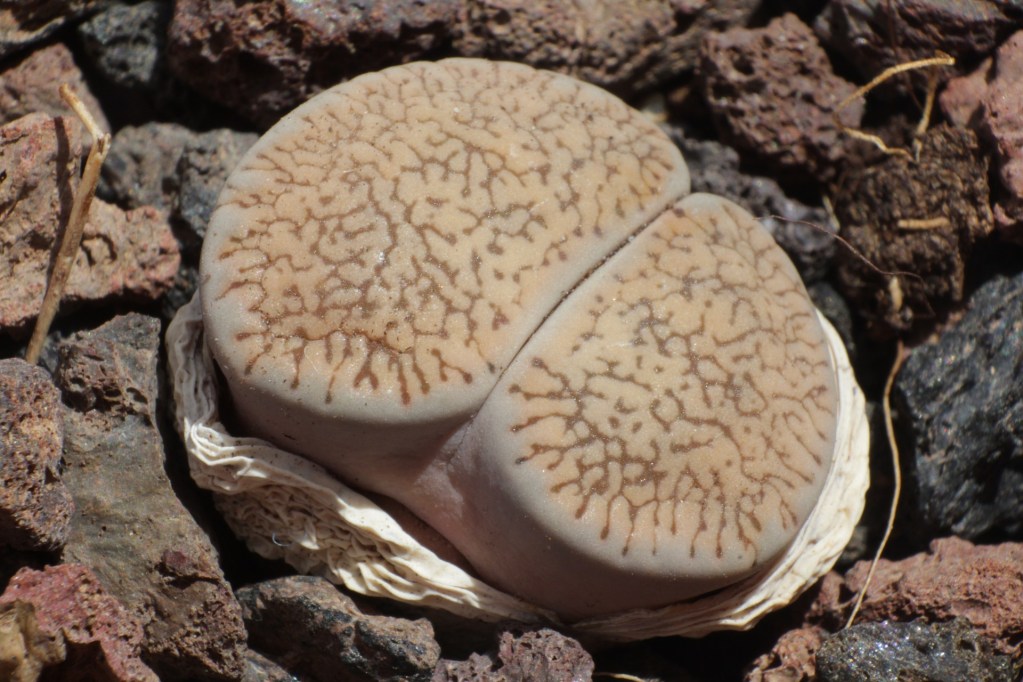
How often should you water lithops?
Because they don’t have a stem, a majority of the lithops plant grows underground. This helps the plant retain moisture and means that it doesn’t require constant watering. As with most members of the succulent family, you’ll want to plant your lithops in a pot with good drainage. They’re finicky plants that prefer water during some stages of their yearly growth cycle and dry soil during others. Overwatering is a main cause of lithops (and succulent) death, so it’s worth learning and watching for signs your lithops are giving you in regard to whether they need water or not.
When it comes time to water your lithops, follow the soak-and-dry method that’s used with other types of succulents. Drench the soil when it’s time to water, then wait until the pot fully dries out before watering again. Lithops like being watered most during late spring and through the summer, but they may need the occasional watering during the winter. At the height of the lithops plant’s growth period in warmer months, you’ll likely find yourself watering once every two weeks or so. That’s the general rule of thumb to follow, but always make sure the soil is dry before watering to be sure.
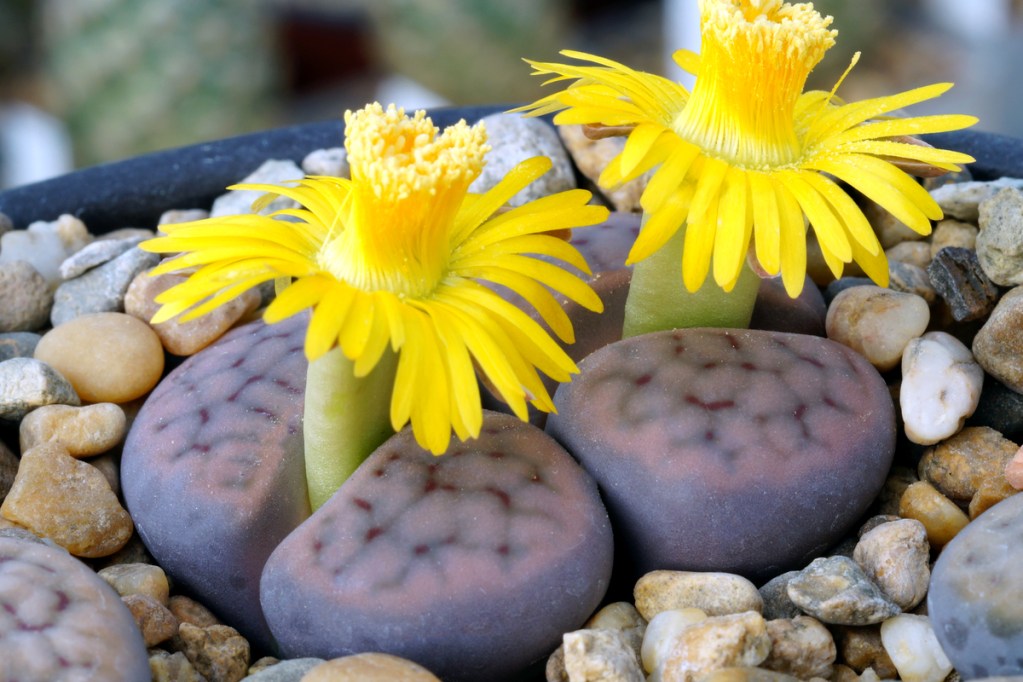
How do you know when lithops need water?
When in doubt, it’s best not to water. When the plant is ready to be watered, you may see it begin to wrinkle or sink down in the pot. Give your plant a light squeeze. If it’s soft, it’s time to water.
The height of the lithops growing cycle is when the weather is warm. Your plant will enter dormancy during this period, at which time you’ll need to start watering less frequently. You’ll occasionally want to give the plant a little drink if it starts to shrivel. At that point, water so that the top half inch of soil is moist. Otherwise, respect your plant’s space and let it take care of itself. Remember that this plant is good at retaining moisture, so it’s rather self-sufficient when it isn’t actively growing.
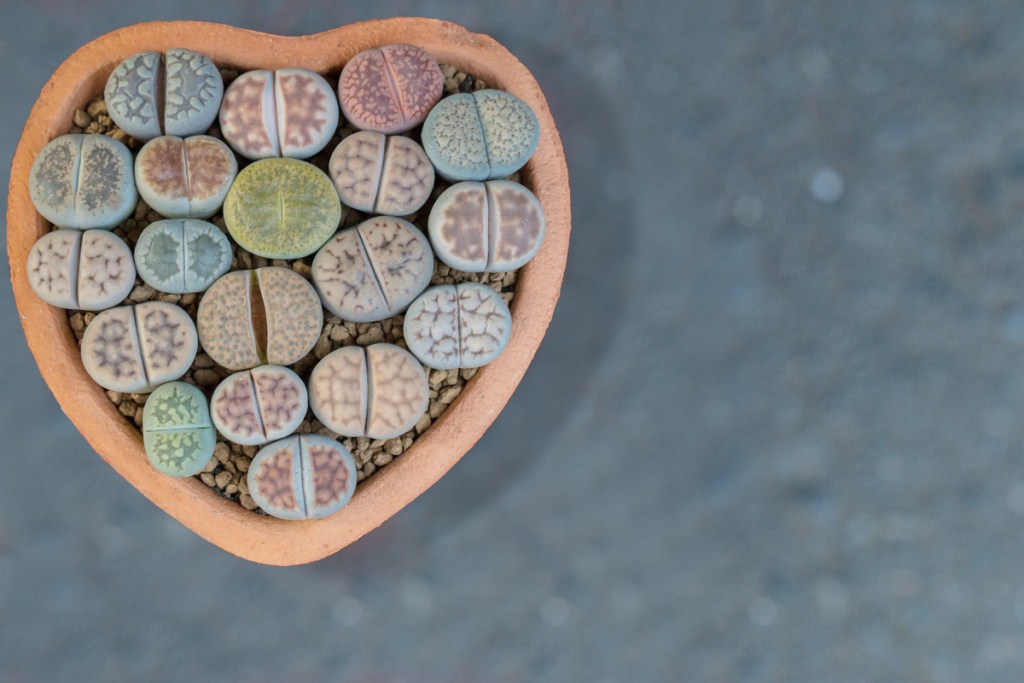
At the end of summer, your lithops will start another growth period, at which time you’ll resume watering once every two weeks (at most). This is when your lithops will begin to bloom if they’re mature enough, generally three or four years old. You’ll know it’s time to start watering again when you see the leaves begin to separate. This is your lithops preparing for flowering. Once winter hits, you’ll go back to respecting your lithops’ dormancy — only this time, you’ll stop watering altogether.
Around wintertime is when the old leaves of your lithops will start to die and the new ones will begin to grow inside. Watering the plant during this period could negatively affect the growth of the new leaves, so do your best to let your lithops sustain themselves. It will feel wrong, especially considering the type of care given to other plants, but your lithops will thank you for it.
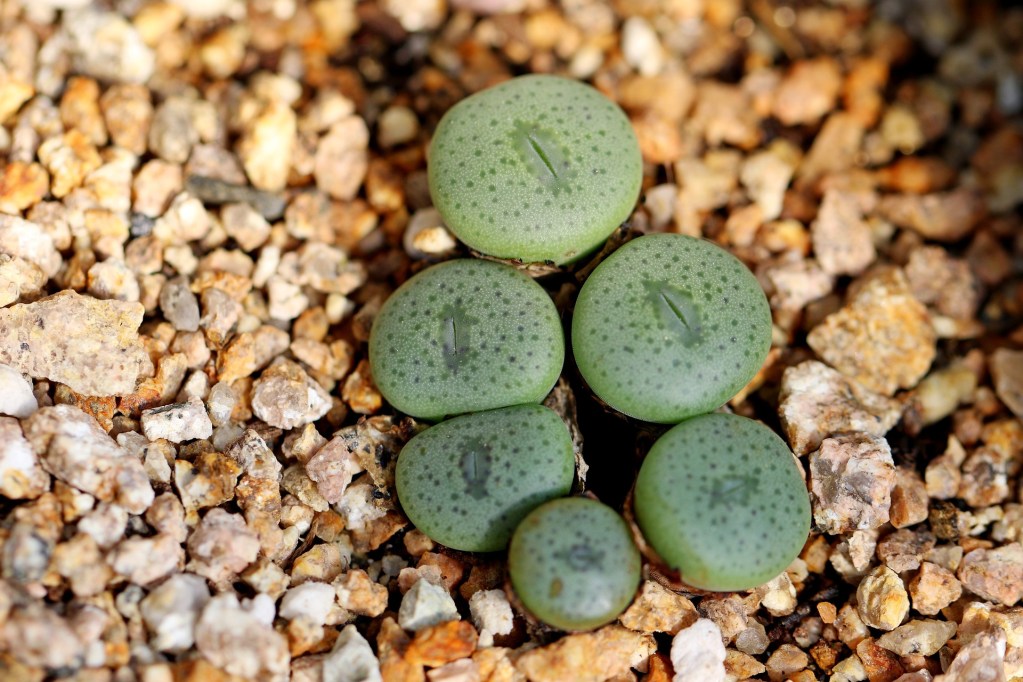
Can lithops get too much sun?
Lithops are adapted in their natural habitat to tolerate harsh sunlight. The best lighting you can provide your plant is four to five hours of early morning light and then partial shade. South- and east-facing windows are ideal places for growing lithops. You’ll know when your lithops aren’t receiving optimal sunlight when they start to lose their patterns and the leaves become elongated. Remember that extreme heat can still cause your lithops to get sunburnt. If this starts to happen, try moving the plant to a slightly less sunny area to see how it fares.
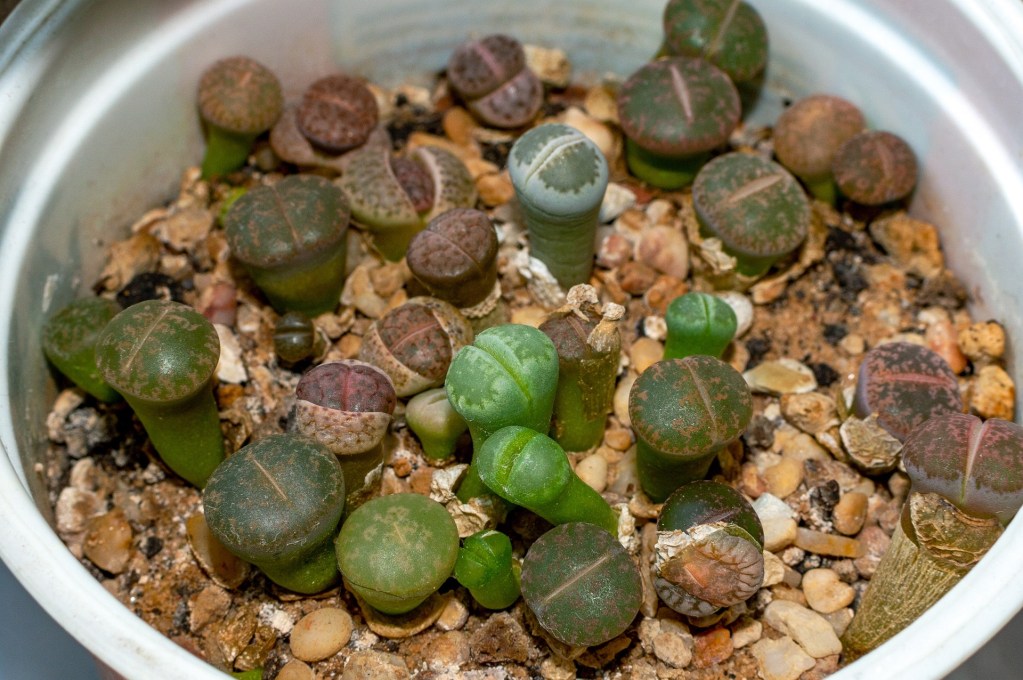
Do you need to fertilize lithops?
As hard as they can be in every other aspect of care, lithops actually don’t need a lot of help with fertilizer. In fact, they should do just fine in a soil-based growing medium without any extra help. While they aren’t heavy feeders, you can give them one application of a liquid all-purpose fertilizer during the growing season. To encourage flowering, you might also want to look for a high-potassium and low-nitrogen plant food — think, a 5-10-10 formula. Whichever plant food you end up choosing, do not get the fertilizer onto the leaves, as this may burn your plant.
Succulents as a whole are different from the standard houseplants we know and love, and lithops are an especially finicky variety. It may take a few tries to figure out the proper care, so don’t be too discouraged if you lose a lithops or two. Some trial and error may be necessary, but you’ll soon figure out how to properly care for your living stone plant.
